Ask most motorcyclists to suggest an epic riding destination, and the answer is likely to be both spectacular and predictable. The Pacific Coast Highway. The Italian Alps. Russia's Road of Bones. Yawn, yawn, and yawn. Ask the same question to Werner Wachter, the owner of Edelweiss Bike Travel and one of the most experienced touring motorcyclists in the world, who has ridden from Argentina to Africa, Tunesia to Tibet, and nearly everywhere in between, and you understandably get an answer that's more unexpected. But Norway? Really? The land of lutefisk—caustic, lye-soaked cod disguised as a delicacy—darkness, and death metal music, is also one of the world's best places to ride a motorcycle?
Really. The Edelweiss endorsement isn't exaggerated: Imagine sinking the Alps into the sea and you'll have some idea of what Norway's west coast looks like. Craggy, glacier-cut peaks plunge straight down into deep, narrow fjords. If you're not climbing a ridge you're racing along thin ribbons of road winding perilously between rock and water. There is no in-between, and on the rugged, sparsely populated islands, isthmuses and peninsulas that compose this Wild West, there is little traffic and certainly no interstates. This strange land is made for motorcycling.
Make a basecamp in the village of Alesund, pronounced like most Norwegian words by swallowing then burping up the vowels until you get something sounding like uh-lay-zund. The city center is cut with narrow canals and channels, suggesting a herring-scented Venice, surrounding an active port that's home to one of Norway's busiest fishing fleets. From this charming and cosmopolitan location you can make easy day trips to the Fjordland, or the rocky island outcrops that form the famous Atlantic Road.
Start with a quick trip to the island of Runde, with a human population of just 90 but a seabird population numbering in the millions. You have to take a ferry to Runde—ferries are an essential, inescapable part of life in Norway, and they run as regularly and dependably as a German subway. The other constant is bridges, the last one leading to Runde stretching almost a kilometer long. The bridge-linked route is reminiscent of crossing the Florida Keys, only with more turns, less traffic, and much less sun.
If you want to stretch your throttle cables, head north from Alesund toward the Atlantic Road. The harsh coastline resembles a rocky moonscape, interrupted only occasionally by small, scrubby brush. It's a starkly beautiful, mostly inhospitable landscape that reflects the Viking character—tough people bred in a tough land. Stop for lunch in the fishing village of Bud—whale was the special of the day when I was there—and walk up the hill overlooking the harbor to explore the ruins of a shuttered Nazi bunker—the hills surrounding this rugged, storm-beaten village were once part of the Hitler's Festung Norwegen ("Fortress Norway").
After warming up on the coast, head inland to make your assault on the 5,500-foot Trollstigen pass. With 11 toe-scraping hairpins, the "Troll's Ladder" is as demanding as Stelvio or any of Europe's other more famous passes, and the view from the summit, out over Isfjorden and Andalsnes, is even more scenic. (Though the only trolls you'll see are woodcarvings outside the mile-high gift shop at the summit.) With an average grade of 9 percent and lined with precipitous drop-offs, Trollstigen is one of Europe's most extreme mountain passes. It's also one of the most enjoyable to ride. The other tourists in Norway are mostly corralled on cruise ships in the fjords below, leaving the roads significantly less crowded with slow-moving RVs and lumbering tour buses than the Italian or Austrian Alps.
Speaking of boats, don't skip the hour-long ferry ride through Geiranger Fjord, Norway's most dramatic natural feature. Sheer, thousand-foot granite cliffs, cut by the occasional waterfall or menacing rock form, reflect sinister patterns on the calm, inky-black surface of the fjord. The real highlight, however, comes when you roll off the boat and out of Geiranger, up toward the 4,843-foot summit of Mount Dalsnibba. Called Eagle's Pass, this epic climb once again begins with a fast, flat section squeezed between fjord and bluff, and then climbs rapidly through a dozen-odd peg-dragging hairpins that take you above the snowline and over the summit into the cold, desolate alpine meadow above. Appropriately, locals have nicknamed this the "Summer to Winter" road.
Riding through quaint fishing villages and rustic farmland past the occasional medieval stave church, you appreciate just how unspoiled and unfranchised Norway is. It feels like riding 50 years back in time. The roads are universally excellent—a benefit of the quasi-socialist state—characterized with seemingly endless miles of smooth, grippy tarmac laid over gentle, rolling sweepers that line the fjord bottoms.
Norway delivers when you're off the bike, too. "Greece of the North" is how Edelweiss Guide Marcus Hellrigl describes Norway, citing the friendly, laid-back manner of Norwegians, who he claims have more in common with life-loving Mediterranean people than anyone else on the European continent. Bash the Scandinavian social welfare model all you want, but universal health care, subsidized higher education, and comprehensive social security make most Norwegians uncommonly content. Not coincidentally, the Global Peace Index consistently ranks Norway the most peaceful country in the world. It's a good place to relax.
The best time to make a trip is July, when the sun doesn't kiss the horizon until almost midnight. When the sun appears, that is. Regn is an ever-present reality in Norway. North Atlantic weather systems meeting steep coastal peaks mean weather is frequently changeable and frequently wet. It rained a lot—probably half the time I was riding in the week I was there—though seldom harder than a steady drizzle. Dressed like a Norwegian fishermen, I had no problem staying comfortable on the bike. The perfectly maintained tarmac stayed grippy even when wet, however, and a BMW R1200RT with heated grips and a big windscreen made things more tolerable.
Bring money, too, and lots of it, because Norway is epically expensive. A recent article in the New York Times travel section led with a statement to this effect: "The first thing people tell you when you go to Norway is, 'It's really expensive.' The second thing they say is, 'No, seriously, it's really expensive!'" In addition to its "most peaceful" title, Norway is consistently ranked as one of the world's most expensive countries too. Despite the massive oil reserves (it's the world's fifth-largest oil exporter), gas currently costs more than $9 per gallon, and—more disturbing—beer can be as much as $15 a pint! Food is so expensive that you can actually buy half a cucumber in grocery stores. Hey, someone's got to pay for all those perfect roads and public health care.
But none of that matters when the riding is this wonderful. Sky-high sin taxes almost seem like a fair deal if the tradeoff is such perfect roads, agreeable people, and stunning scenery like that found on the Norge coast. During the summer at least, it's difficult to imagine a more epic road-riding destination than Norway.
Longitude: 4° 29' 7" W
Every dyed-in-the-leathers motorcycle enthusiast needs to visit the Isle at least once to lap the legendary, 37.73-mile Snaefell Mountain Course. Well marked on public roads—just follow the Arai-sponsored mileposts and turn when you see the Armco barriers—it's easy to find your way around the most infamous racetrack in the world. Nothing compares to threading between the same hedgerows as heroes like Surtees, Hailwood, Agostini, and Dunlop, streaking down Bray Hill, downshifting into Creg-ny-Baa, feeling the bars shake across the tram tracks at the Bungalow (wave to Joey's memorial as you blast past), or doing your best John McGuiness impression jumping over Ballaugh Bridge. The ghosts will be alive in your helmet, lap after unrestricted lap. —Aaron Frank










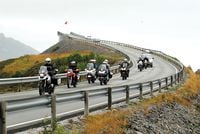
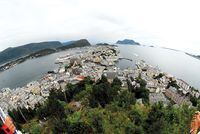


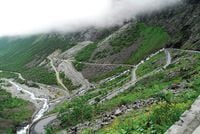
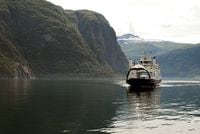

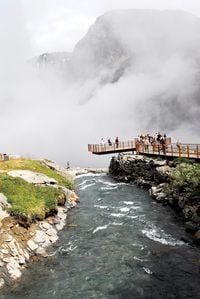
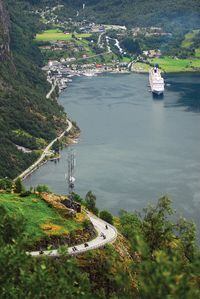
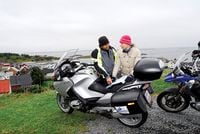
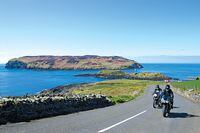
/cloudfront-us-east-1.images.arcpublishing.com/octane/S35YGSEMEZB4BLTDJTSZPF4GLA.jpg)
/cloudfront-us-east-1.images.arcpublishing.com/octane/5UOT6HPX2JFMRJAX6EH45AR4MQ.jpg)
/cloudfront-us-east-1.images.arcpublishing.com/octane/OKWOJWAKP5EP3OACCRRWPCIX2Q.jpg)
/cloudfront-us-east-1.images.arcpublishing.com/octane/2WF3SCE3NFBQXLDNJM7KMXA45E.jpg)
/cloudfront-us-east-1.images.arcpublishing.com/octane/G4MG6OUCJNBSHIS2MVVOTPX65E.jpg)
/cloudfront-us-east-1.images.arcpublishing.com/octane/IIGGWFOTOJGB7DB6DGBXCCMTDY.jpg)
/cloudfront-us-east-1.images.arcpublishing.com/octane/QSTCM6AVEZA5JJBUXNIQ3DSOF4.jpg)
/cloudfront-us-east-1.images.arcpublishing.com/octane/U4I7G625B5DMLF2DVIJDFZVV6M.jpg)
/cloudfront-us-east-1.images.arcpublishing.com/octane/B6XD6LS6IVCQPIU6HXDJSM3FHY.jpg)
/cloudfront-us-east-1.images.arcpublishing.com/octane/ICL63FEDDRDTTMINYICCEYGMDA.jpg)
/cloudfront-us-east-1.images.arcpublishing.com/octane/FCGZHQXRBZFLBAPC5SDIQLVF4I.jpg)
/cloudfront-us-east-1.images.arcpublishing.com/octane/WNOB6LDOIFFHJKPSVIWDYUGOPM.jpg)

/cloudfront-us-east-1.images.arcpublishing.com/octane/X33NU3E525ECRHXLNUJN2FTRKI.jpg)
/cloudfront-us-east-1.images.arcpublishing.com/octane/6KKT5NNL2JAVBOXMZYS5ZO76YA.jpg)
/cloudfront-us-east-1.images.arcpublishing.com/octane/J5RKG5O455GMPGQRF2OG6LRT7A.jpg)
/cloudfront-us-east-1.images.arcpublishing.com/octane/GX2CIZKQVRH2TATDM26KFG2DAE.jpg)
/cloudfront-us-east-1.images.arcpublishing.com/octane/ZWIDYSAKQZHD5BHREMQILXJCGM.jpg)
/cloudfront-us-east-1.images.arcpublishing.com/octane/CYUHJZCTSJCH3MRAQEIKXK7SCQ.jpg)
/cloudfront-us-east-1.images.arcpublishing.com/octane/LKOFINY56FCXJCANJ5M7ZDQUBY.jpg)
/cloudfront-us-east-1.images.arcpublishing.com/octane/4NBPDACMWJH63JQYJVK3QRBDZI.jpg)
/cloudfront-us-east-1.images.arcpublishing.com/octane/KKHQHRR3FJGX7H2IPU6RALMWG4.jpg)

/cloudfront-us-east-1.images.arcpublishing.com/octane/5IOFS5JAE5FOXMNA23ZRAVVYUU.jpg)